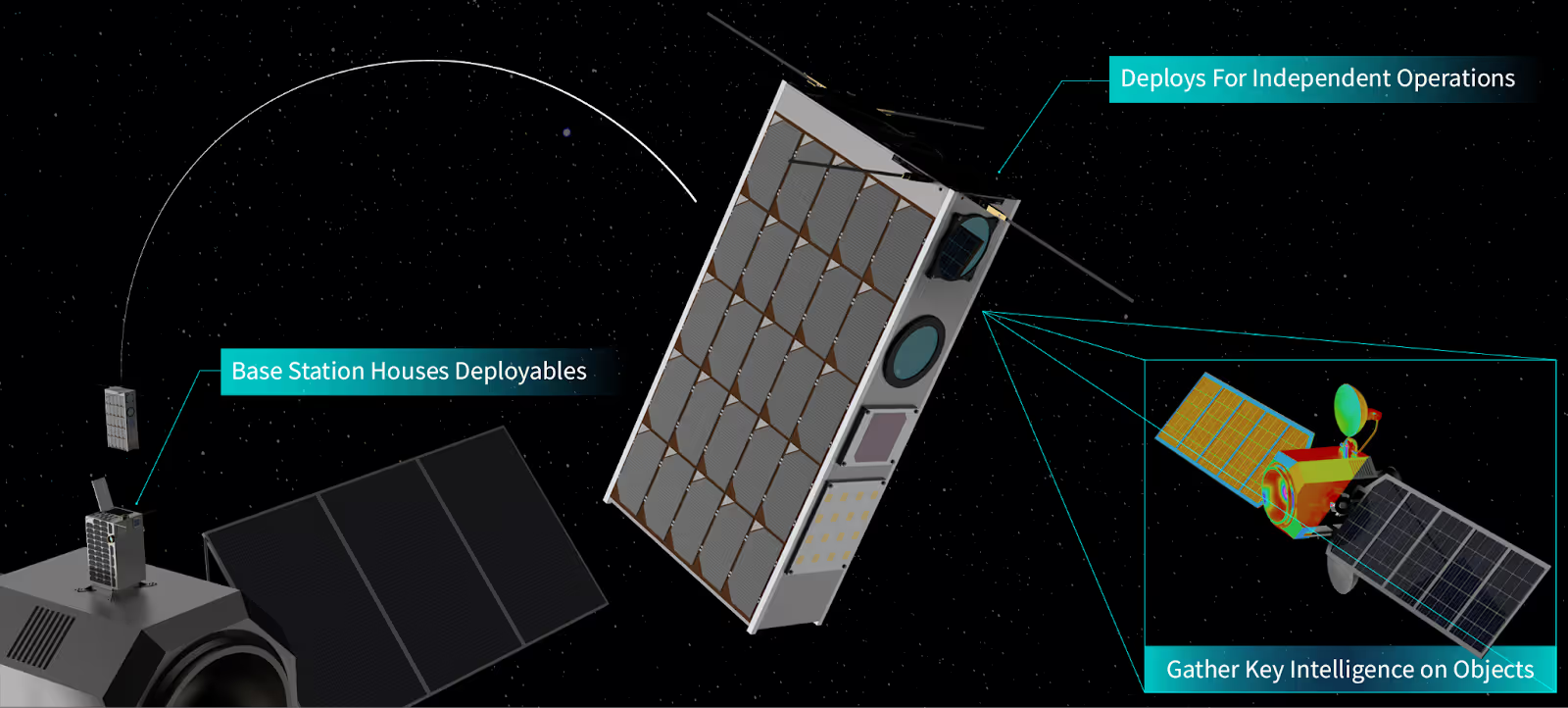Flagstaff, Arizona – Katalyst Space Technologies announced new funding from the Space Force to develop a mission to upgrade a commercial satellite - owned by Intelsat - with dynamic inspection and defense capabilities. The goal of the mission is to demonstrate the feasibility of installing upgrades on commercial satellites, which can be used to provide services to the Space Force.
The upgrade (SHIELD), designed by Katalyst, can perform inspections, collect space domain awareness data, and execute defensive maneuvers. The system includes a base station - mounted on the fixed platform - and deployable scouting units, which can inspect resident space objects at close range. By staging an upgrade like this on a commercial satellite already in space, the military can shorten response times after detecting adversarial threats. This directly supports the Space Force’s Tactically Responsive Space (TacRS) effort.
“Reducing the time it takes to characterize threats and resolve anomalies is a priority for the DoD” explains Ghonhee Lee, CEO of Katalyst Space Technologies. “By pre-positioning assets like the SHIELD upgrade, the Space Force can achieve this level of responsiveness faster.”
USSPACECOM has expressed support for the project, stating that SHIELD-1 “will provide benefit to operations through its ability to rapidly deploy at the point of conflict and perform detailed, on-demand, object tracking and characterization in the vicinity of high-value assets.”
SHIELD-1 will be the first mission attempting to install a payload on a commercially operated system, with the goal of providing dynamic space domain awareness services to the Space Force. If the Space Force needs high resolution data on an uncharacterized resident space object (RSO), the SHIELD scouting unit can be deployed on demand from its base station on board the Intelsat platform. For Intelsat, this presents a potential new revenue stream. For the Space Force, it’s a low cost, low risk path to closing intelligence gaps in Geosynchronous Earth Orbit (GEO).
“As a major operator of fixed platforms in geosynchronous orbit, Intelsat recognizes the critical role we play in accelerating the Space Force’s vision of resilient and responsive space infrastructure,” comments David Broadbent, President of Intelsat Government Solutions. “Upgrading our existing on-orbit platforms with the capabilities that SHIELD offers is a cost-effective pathway for us to optimize our fleet to better serve our government partners.”
The mission, called SHIELD-1, could launch as early as 2026. The accelerated timeline is made possible because the mission uses flown technologies in a new way and leverages RPO expertise of external partners. For example, the propulsion, vision-based navigation, and guidance, navigation and controls (GNC) systems are based on those developed through a partnership between the University of Texas Austin (UT) and the NASA Johnson Space Center (NASA JSC).
These underlying technologies flew in space via the Seeker-1 technology demonstration. In 2019, NASA launched the Seeker CubeSat on board Cygnus NG-11, an International Space Station resupply mission. After Cygnus had moved a safe distance away from the ISS, Seeker deployed and performed proximity operations.
The original goal for Seeker was to enable rapid, low-cost development of an advanced in-space inspection capability, and Seeker-1 was the first step down that path. The SHIELD-1 mission aims to build on the success of Seeker-1. By selecting subsystems that have achieved a high Technology Readiness Level (TRL) for the SHIELD-1 mission, the Space Force and mission partners reduce risks, while accelerating timelines.
Atomos, a Colorado-based startup specializing in orbital transfer vehicles (OTVs) and in-space servicing, will also join as a mission partner. By the end of 2024, the SHIELD-1 mission team will complete a compatibility assessment for the Atomos Quark servicing vehicle and the Intelsat demo target satellite. Expanding the use of in-space servicing to sustain maneuvers is a key priority for USSPACECOM, in an effort they are calling Dynamic Space Operations.
Funding for the SHIELD-1 mission is supported by the AFWERX SBIR program. The most recent award will fund a feasibility study (2024) with follow-on efforts supporting engineering and test activities (2025-26), taking the mission to the manifest-ready stage. After that, the SHIELD-1 team plans to pursue additional funding opportunities for launch and on-orbit operations, with the goal of demonstrating and leaving behind the capability by late 2026 or early 2027.
The views expressed are those of the author and do not necessarily reflect the official policy or position of the Department of the Air Force, the Department of Defense, or the U.S. government.


